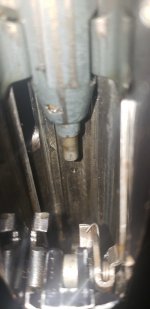I was trying to sight in a remington 742 that my father recently bought at a auction. I went through the rifle and made sure everything functioned correctly and stripped it down to ensure all the nuts/bolts etc. were tight. After putting a new scope and rings on it i went to the range today. At 50 yards I had it shooting a 1" group after 6 shots. During one of those shots I saw one of the split necks. I moved it out to 100 yards and the group opened right up. Vertical 4" spread between 4 shorts. I even changed ammo and same result. I got another split neck so I stopped shooting it for the day. I got it home and rechecked everything and nothing came loose.
Anybody have experience with this rifle and what is the probable cause of the split necks. They were on the same winchester ammo but I have never experienced this before. I had checked the barrel before and didn't observe any pitting or signs of damage. Could use some advice and curious if this thing is a safety risk.
Anybody have experience with this rifle and what is the probable cause of the split necks. They were on the same winchester ammo but I have never experienced this before. I had checked the barrel before and didn't observe any pitting or signs of damage. Could use some advice and curious if this thing is a safety risk.



